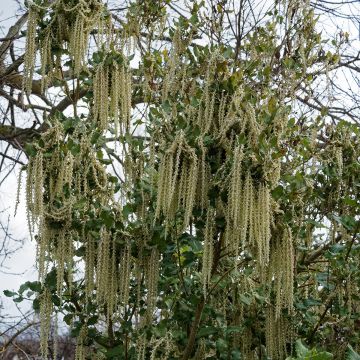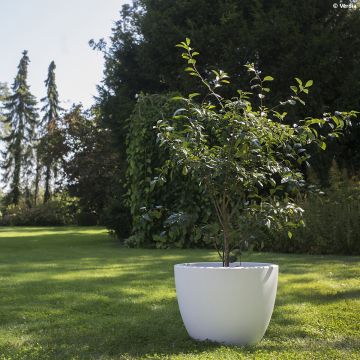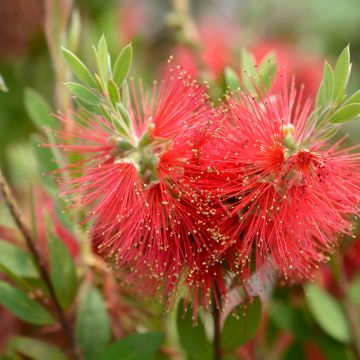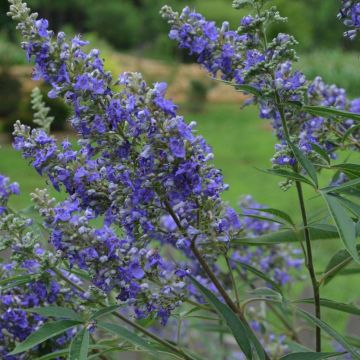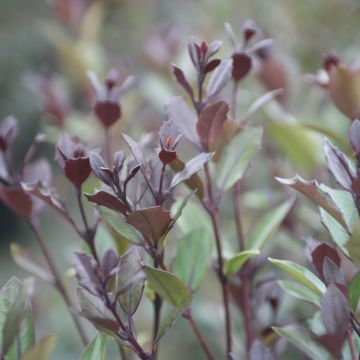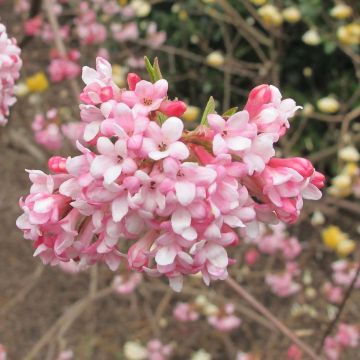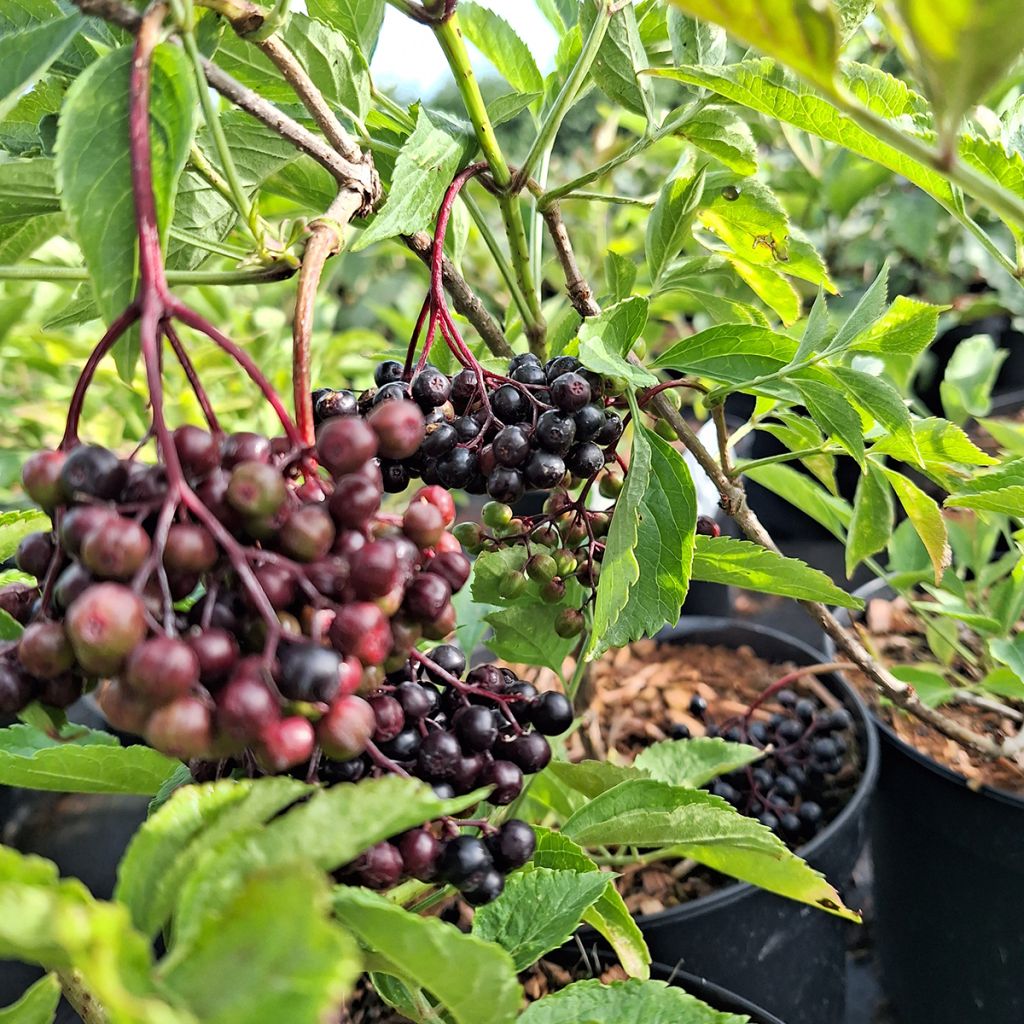

Sambucus nigra Korsor
Sambucus nigra Korsor
Sambucus nigra Haidegg 17
European Elder, Black Elder, Elder, Elderberry, European Elderberry, European black Elderberry
Special offer!
Receive a €20 voucher for any order over €90 (excluding delivery costs, credit notes, and plastic-free options)!
1- Add your favorite plants to your cart.
2- Once you have reached €90, confirm your order (you can even choose the delivery date!).
3- As soon as your order is shipped, you will receive an email containing your voucher code, valid for 3 months (90 days).
Your voucher is unique and can only be used once, for any order with a minimum value of €20, excluding delivery costs.
Can be combined with other current offers, non-divisible and non-refundable.
Home or relay delivery (depending on size and destination)
Schedule delivery date,
and select date in basket
This plant carries a 6 months recovery warranty
More information
We guarantee the quality of our plants for a full growing cycle, and will replace at our expense any plant that fails to recover under normal climatic and planting conditions.
Description
Korsor black elderberry (Sambucus nigra) is a vigorous variety that produces large sweet fruits. It is a beautiful bush that grows quickly and is easy to cultivate. Ideally, it should be planted in autumn for a harvest in September.
The black elderberry produces small round berries at the end of summer, with a black-purple colour and a diameter of about 5 mm (0.25 in). Both the berries and the flowers are edible, but they must be cooked before consumption. Whether eaten alone or combined with other fruits, these berries are delicious in jams, jellies, or syrups. As for the flowers, they can be used in fritters or infusions.
'Korsor' is a vigorous variety of Austrian origin. The flowers, in the form of white corymbs, appear around the month of May and have a pleasant fragrance. They are followed by the formation of small violet-black berries arranged in downward-facing clusters. The harvest of this variety takes place around September. It will gradually increase during the first few years and become optimal from the fifth year onwards.
The black elderberry can be found in nature at the edge of woods, in hedges or thickets, and is sometimes confused with yew, whose berries are toxic. The black elderberry is a beautiful, fast-growing, self-fertilising bush that can reach a height of 3 to 5 m (10 to 16ft). Its therapeutic properties have been known since ancient times. In the garden, you can plant it in a flowerbed, as an informal hedge, or as a standalone plant. Its tender and pithy stems, dense foliage, fragrant flowers, and black berries attract numerous insects and birds, thus promoting biodiversity in the garden. The black elderberry is a very hardy small tree with opposite, finely dentate leaves that emit an unpleasant odour when crushed. Although deciduous, its leaves are among the first to appear in spring. Add these leaves to your compost to speed up decomposition or make a liquid fertiliser to combat mildew and aphids.
Report an error about the product description
Sambucus nigra Korsor in pictures
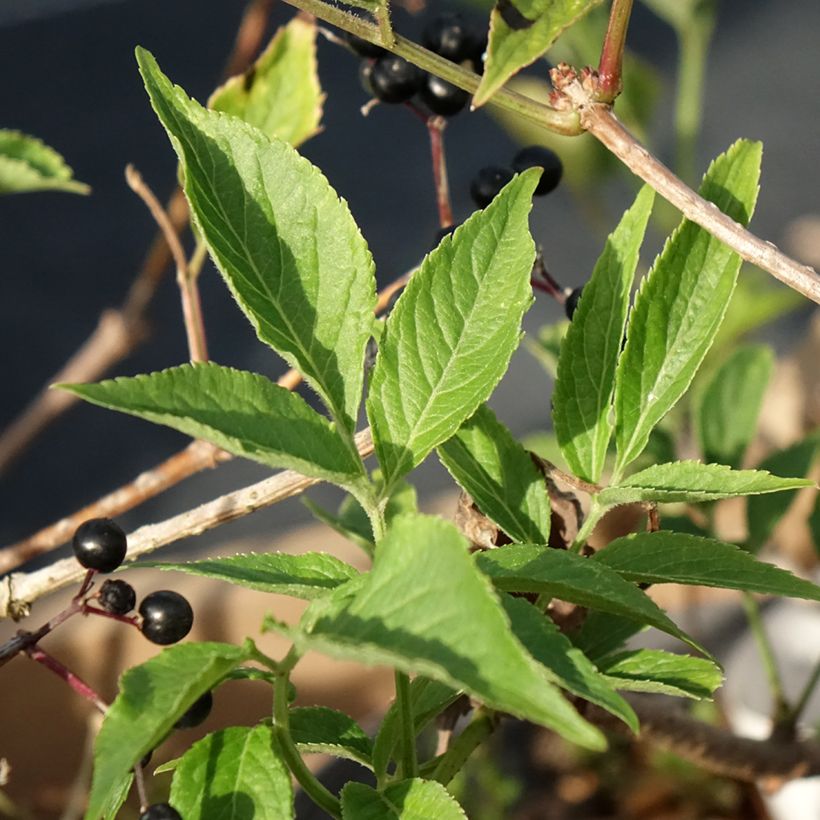

Plant habit
Fruit
Flowering
Foliage
Botanical data
Sambucus
nigra
Haidegg 17
Adoxaceae
European Elder, Black Elder, Elder, Elderberry, European Elderberry, European black Elderberry
Western Europe
Planting and care
The black elderberry is ideally planted in autumn, or alternatively in spring. This bush thrives in all types of soil, preferably moist. Choose a sunny or partially shaded location. Soak the root ball in water for a few moments before planting. Dig a wide and deep hole and add compost or potting soil. Place the root ball in the hole and cover with soil. The black elderberry is not particularly susceptible to diseases and pests, and does not require any specific care in this regard. Pruning is not necessary.
Planting period
Intended location
Care
This item has not been reviewed yet - be the first to leave a review about it.
Similar products
Haven't found what you were looking for?
Hardiness is the lowest winter temperature a plant can endure without suffering serious damage or even dying. However, hardiness is affected by location (a sheltered area, such as a patio), protection (winter cover) and soil type (hardiness is improved by well-drained soil).

Photo Sharing Terms & Conditions
In order to encourage gardeners to interact and share their experiences, Promesse de fleurs offers various media enabling content to be uploaded onto its Site - in particular via the ‘Photo sharing’ module.
The User agrees to refrain from:
- Posting any content that is illegal, prejudicial, insulting, racist, inciteful to hatred, revisionist, contrary to public decency, that infringes on privacy or on the privacy rights of third parties, in particular the publicity rights of persons and goods, intellectual property rights, or the right to privacy.
- Submitting content on behalf of a third party;
- Impersonate the identity of a third party and/or publish any personal information about a third party;
In general, the User undertakes to refrain from any unethical behaviour.
All Content (in particular text, comments, files, images, photos, videos, creative works, etc.), which may be subject to property or intellectual property rights, image or other private rights, shall remain the property of the User, subject to the limited rights granted by the terms of the licence granted by Promesse de fleurs as stated below. Users are at liberty to publish or not to publish such Content on the Site, notably via the ‘Photo Sharing’ facility, and accept that this Content shall be made public and freely accessible, notably on the Internet.
Users further acknowledge, undertake to have ,and guarantee that they hold all necessary rights and permissions to publish such material on the Site, in particular with regard to the legislation in force pertaining to any privacy, property, intellectual property, image, or contractual rights, or rights of any other nature. By publishing such Content on the Site, Users acknowledge accepting full liability as publishers of the Content within the meaning of the law, and grant Promesse de fleurs, free of charge, an inclusive, worldwide licence for the said Content for the entire duration of its publication, including all reproduction, representation, up/downloading, displaying, performing, transmission, and storage rights.
Users also grant permission for their name to be linked to the Content and accept that this link may not always be made available.
By engaging in posting material, Users consent to their Content becoming automatically accessible on the Internet, in particular on other sites and/or blogs and/or web pages of the Promesse de fleurs site, including in particular social pages and the Promesse de fleurs catalogue.
Users may secure the removal of entrusted content free of charge by issuing a simple request via our contact form.
The flowering period indicated on our website applies to countries and regions located in USDA zone 8 (France, the United Kingdom, Ireland, the Netherlands, etc.)
It will vary according to where you live:
- In zones 9 to 10 (Italy, Spain, Greece, etc.), flowering will occur about 2 to 4 weeks earlier.
- In zones 6 to 7 (Germany, Poland, Slovenia, and lower mountainous regions), flowering will be delayed by 2 to 3 weeks.
- In zone 5 (Central Europe, Scandinavia), blooming will be delayed by 3 to 5 weeks.
In temperate climates, pruning of spring-flowering shrubs (forsythia, spireas, etc.) should be done just after flowering.
Pruning of summer-flowering shrubs (Indian Lilac, Perovskia, etc.) can be done in winter or spring.
In cold regions as well as with frost-sensitive plants, avoid pruning too early when severe frosts may still occur.
The planting period indicated on our website applies to countries and regions located in USDA zone 8 (France, United Kingdom, Ireland, Netherlands).
It will vary according to where you live:
- In Mediterranean zones (Marseille, Madrid, Milan, etc.), autumn and winter are the best planting periods.
- In continental zones (Strasbourg, Munich, Vienna, etc.), delay planting by 2 to 3 weeks in spring and bring it forward by 2 to 4 weeks in autumn.
- In mountainous regions (the Alps, Pyrenees, Carpathians, etc.), it is best to plant in late spring (May-June) or late summer (August-September).
The harvesting period indicated on our website applies to countries and regions in USDA zone 8 (France, England, Ireland, the Netherlands).
In colder areas (Scandinavia, Poland, Austria...) fruit and vegetable harvests are likely to be delayed by 3-4 weeks.
In warmer areas (Italy, Spain, Greece, etc.), harvesting will probably take place earlier, depending on weather conditions.
The sowing periods indicated on our website apply to countries and regions within USDA Zone 8 (France, UK, Ireland, Netherlands).
In colder areas (Scandinavia, Poland, Austria...), delay any outdoor sowing by 3-4 weeks, or sow under glass.
In warmer climes (Italy, Spain, Greece, etc.), bring outdoor sowing forward by a few weeks.

































